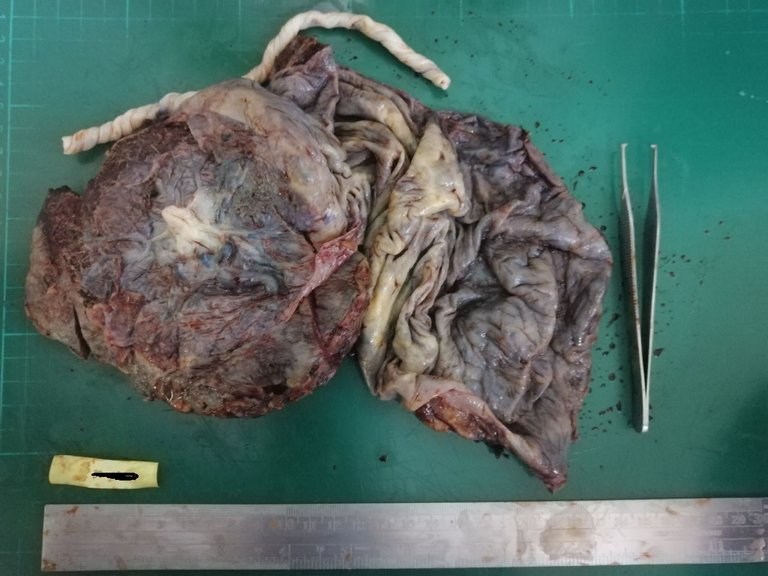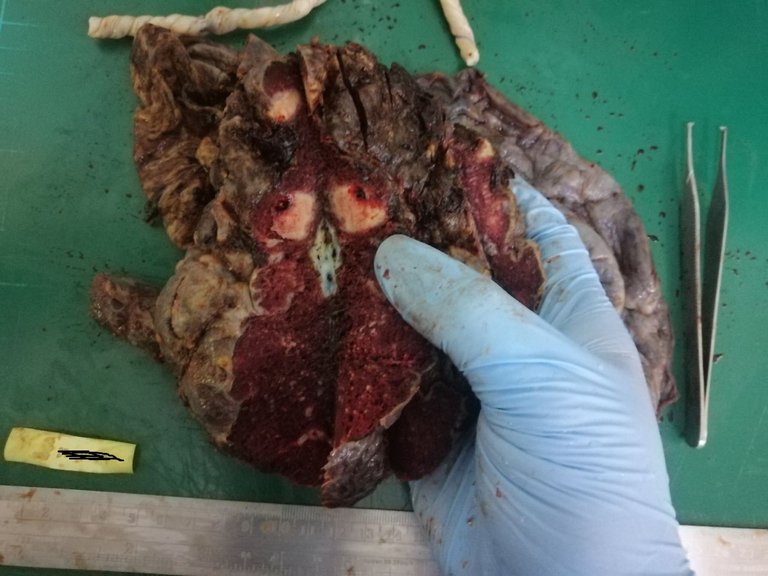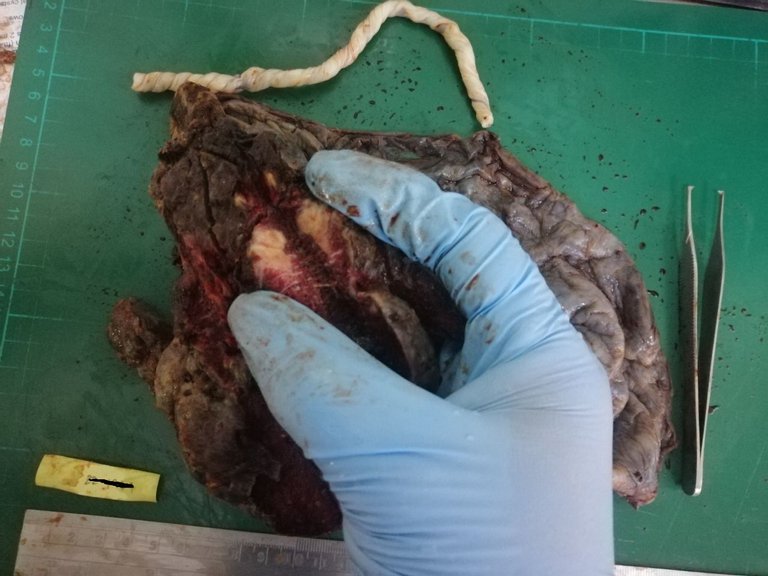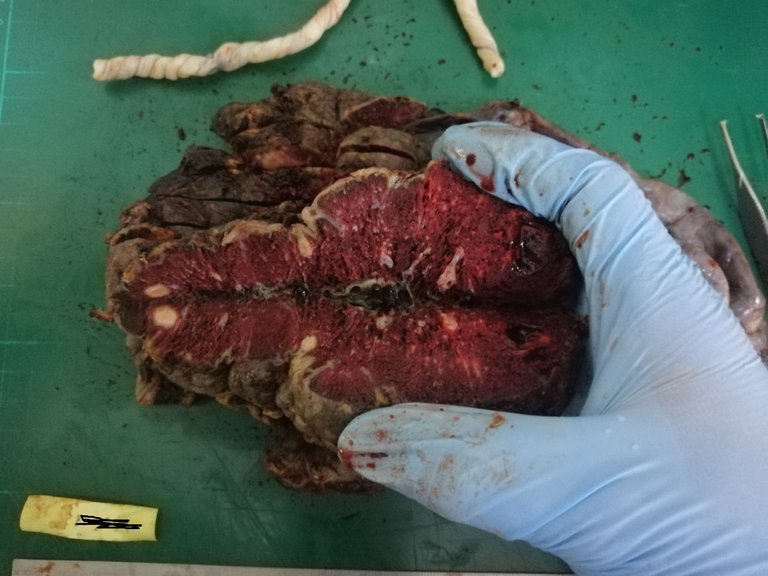Probably Just Placental Infarctions
It's just a guess based on my grossing of the specimen. Placentas usually get discarded after birth but due to diverse cultural belief systems in our area, some folks would request for them for superstitious reasons. Superstitious reasons can also include bizarre stories pertaining to human consumption.
For clinical reasons, if the baby is not suspected to have any congenital anomalies or have any problematic birth, the placenta doesn’t get submitted for biopsy. On the case below, this was submitted after the mother underwent C-section for abruptio placenta.

Although the request did not specifically say the mother had any maternal complications like preeclampsia/eclampsia, this would still be the first thing I would suspect after seeing the gross well demarcated pale tan nodules distributed within the placental disc.

These well demarcated, pale tan lesions are soft to firm. Right at the center of the cut you'll see a three holes which corresponds to the umbilical cord at its base. Normally, sites of infarction are more common and normal to see at the periphery of the disc because this is where the placenta starts to separate and get cut off from the blood supply. Seeing these infarcts at the central or paracentral areas close to the umbilical cord is never normal.

I’m just going to insert a pet peeve of mine when it comes to reading requests submitted by colleagues. Sometimes they just fill out the request with missing details that require us to make educated guesses about the patient’s history so we have to go out of our way to bug them for it. It really is an inconvenience on both sides just to get the work done. End of rant.
This supports a possible history of chronic placental infarctions and recent infarctions that have occurred prior to the abruptio placenta event. Preeclampia/Emclampsia is hypertension during pregnancy, at its most simple definition I could think of while writing this. Because of the high pressure and constriction of blood vessels, the blood supply gets reduced significantly between the maternal-fetal circulation causing these chronic gross changes you see. Other causes include getting the vessels clogged blocking circulation on some of these sites.

The small specks of white are actually blood vessels but those slight round nodules are the sites of infarcted areas (my guess).
This is just my educated guess on grossing the specimen as it will be confirmed when the slides come out. I’m excited to see whether the case has chorangiosis too. We’re taught to be able to recognize the diagnosis based on the gross findings, which is what our old school seniors were emphasized decades ago. But because of the advent of molecular studies and immunohistochemistry, it opened up more disease classification system that some cases just look the same on gross but are different at the microscopic, immunomorphologic, and molecular level. I don’t think this case is that complex but I don’t get these kinds of cases often especially how prominent those sites of infarction are.
If you made it this far reading, thank you for your time.
Posted with STEMGeeks
Would infarctions be a cause of calcification?
Yes they can and seeing one supports the diagnosis that the condition has been chronic as calcifications tend to happen when there is chronic injury. I didn't feel any grainy like consistency when cutting up the nodule as profound calcification can give you than feel when cutting. I may find some microcalcifications on the slide later on.
Thanks for your contribution to the STEMsocial community. Feel free to join us on discord to get to know the rest of us!
Please consider delegating to the @stemsocial account (85% of the curation rewards are returned).
You may also include @stemsocial as a beneficiary of the rewards of this post to get a stronger support.
I have actually encapsulated two of my children's placentas for their mother to ingest. It was an involved process of steaming, dehydrating, pulverizing, and then putting the powder into pills. Supposedly there are a lot of healthy hormones and nutrients in it that can be helpful to lactation and relieving postpartum depression. Can't say how true that is but she seemed to think it helped.
I will agree though that there is a lot of superstition out there. The oddest one to me is the "lotus birth" where the placenta is left attached to the baby until it rots off. I'm not sure I ever found a clear reason why people do it but I can only imagine the smell....
I'm not knowledgeable about the superstitions but I wouldn't be surprised how far they can go. Technically, placentas are still "meat" and do contain a lot of hormones as it's an endocrine organ so the claim of it being nutritious isn't hard to imagine. But I haven't read any extensive studies to support their consumption on mainstream medicine.
The lotus birth is something I came across and only heard some celebrities from my country do but local lore wise, there's burying the placenta at home to ground the child to family or drying up the umbilical cord to be used as a bookmark to bless the child with intelligence.
Keeping the placenta attached as long as it can seems like inviting possible infection on the cord but I'm no expert on the subject to make a comment about it.